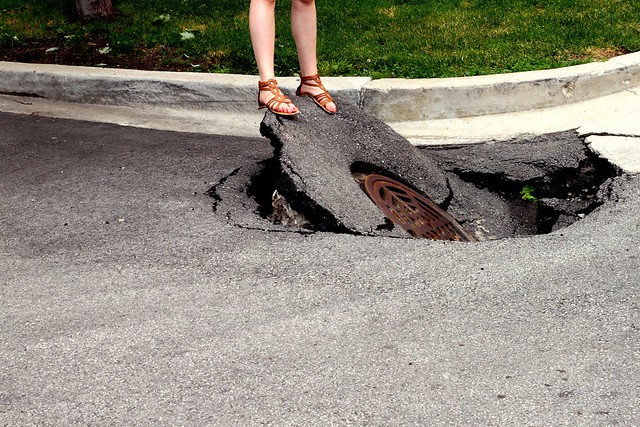The Illinois Department of Transportation, whose secretary resigned last week after accusations about patronage hiring, distributed $545 million in gas tax revenue to fix streets in almost 3,000 jurisdictions last year. While this sounds like a lot of money, poor road and bridge conditions across the state can attest to the fact that these funds might not be going to the places that need them most. The Chicago Metropolitan Agency for Planning, the region's federally designated metropolitan planning organization, has recently written about different methods that IDOT could use to more fairly distribute these revenues across the state's cities and counties.
CMAP's regional comprehensive plan, GO TO 2040, implemented for the first time a system of performance measures to make sure that transportation funding generally goes to where it's needed, instead of just where it's wanted. In that spirit, CMAP suggests a few alternatives to the state's existing distribution mechanism, which state law currently divvies up based mostly on population as well as the number of licensed vehicles and street mileage. The current system steers 71 percent of statewide gas tax revenue to the seven-county CMAP region.
This "formula funding" mechanism, CMAP says, ignores the transportation system's changing needs. Plus, since the percentages are set in law, that means that fund distributions "cannot respond to changing needs over time." For example, 16.74 percent of the $545 million in annual gas tax revenue goes to the one Illinois county with over one million residents -- Cook County. Meanwhile, DuPage County has grown to 932,000 residents, and could reach one million residents before 2040. When that happens, DuPage would become eligible for that 16.74 percent slice, and Cook could see its own revenue cut in half overnight, even though its streets would remain heavily used by suburbanites driving into the region's core for work or play.
CMAP's analysis first looked at two methods of gauging need: the amount of asphalt cities have, and the number of cars being driven. Based on lane miles (the number of lanes multiplied by street length), the CMAP region comprises only 51 percent of the lane miles in Illinois -- but those streets are very heavily used, with the average Northeastern Illinois highway carrying 164 percent more cars than the average Illinois highway. As a result, a simple lane-mile measure, while better than the current mileage measure, would not adequately reflect the heavy burden that the region's streets carry.
CMAP also mentions that IDOT could examine new ways to target financial assistance to where it's needed most. IDOT could, for example, look at pavement conditions, and grant more funds to cities and counties that have more (and more heavily traveled) streets that need more attention. Bumpy streets pose a particular hazard to bicycle riders, but also lead to costly car repairs for both drivers and for transit buses. However, the Condition Rating Survey that IDOT maintains surveys very few streets: just 4.8 percent of county roads and 2.0 percent of municipal roads currently have ratings.
Expanding the state's monitoring of pavement quality, and steering funds to those areas with the worst pavement conditions, could go a long way towards ensuring a smooth ride for more Illinoisans.





